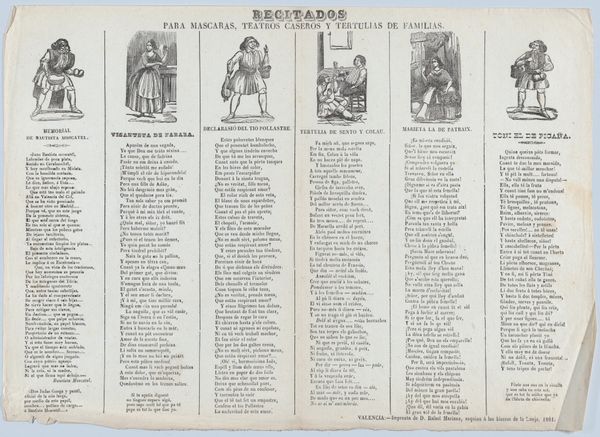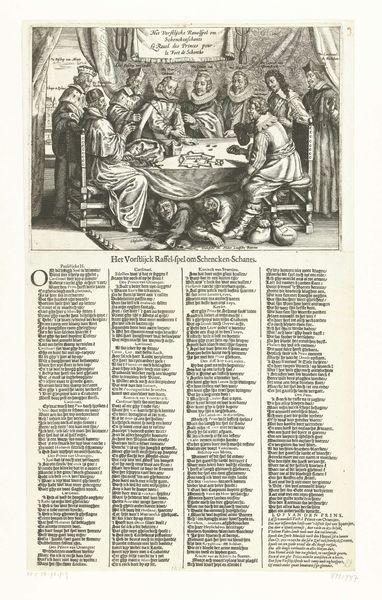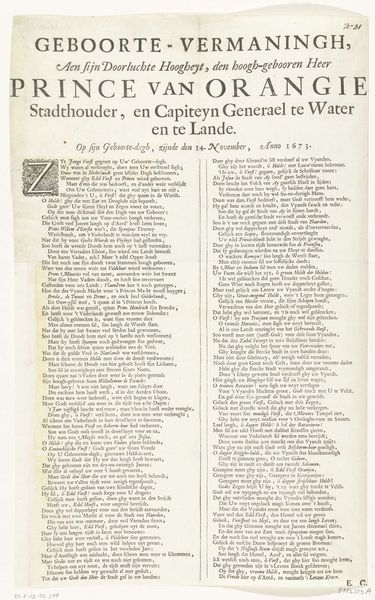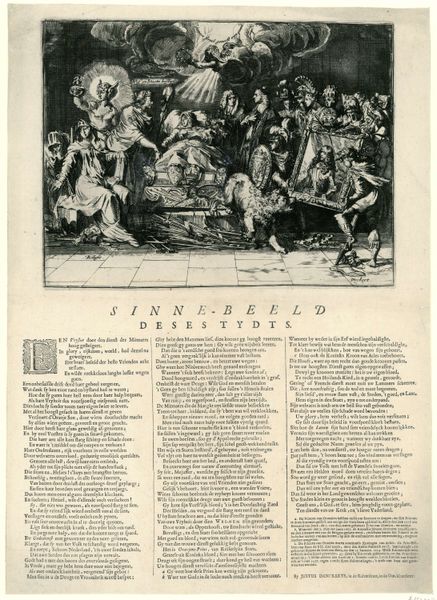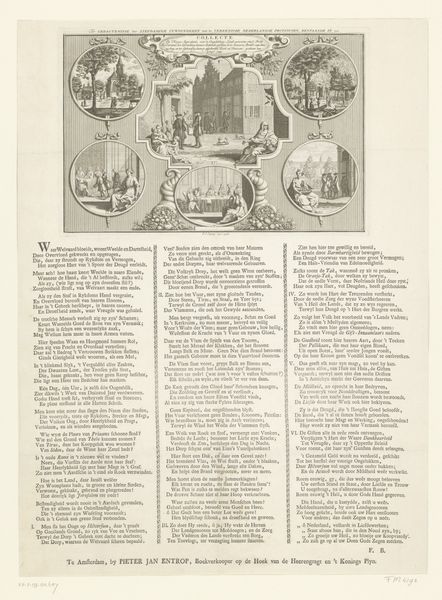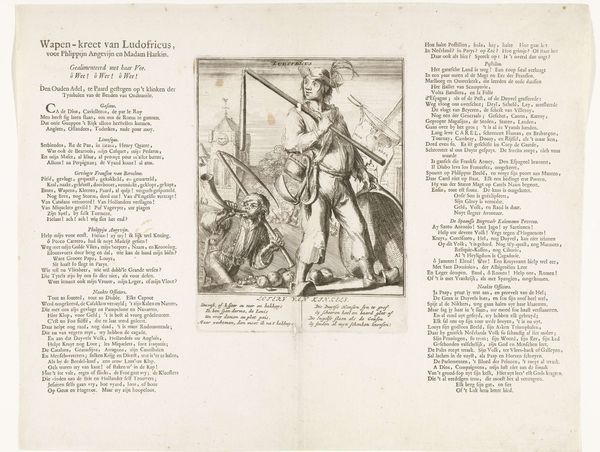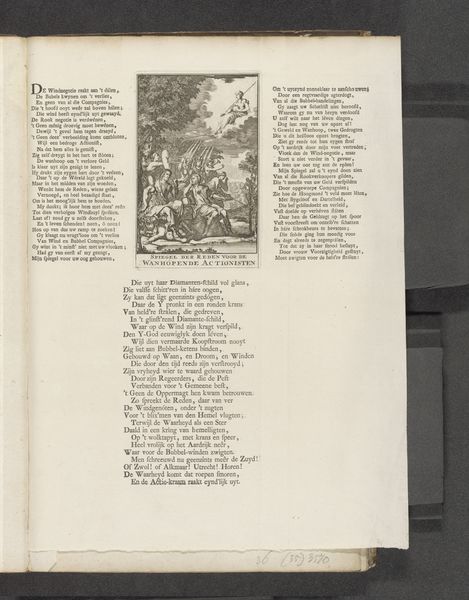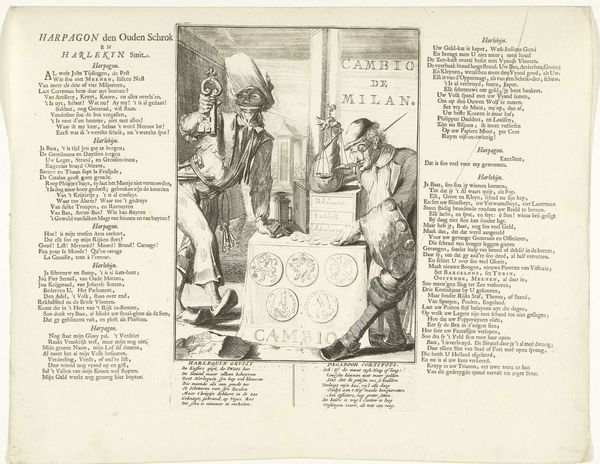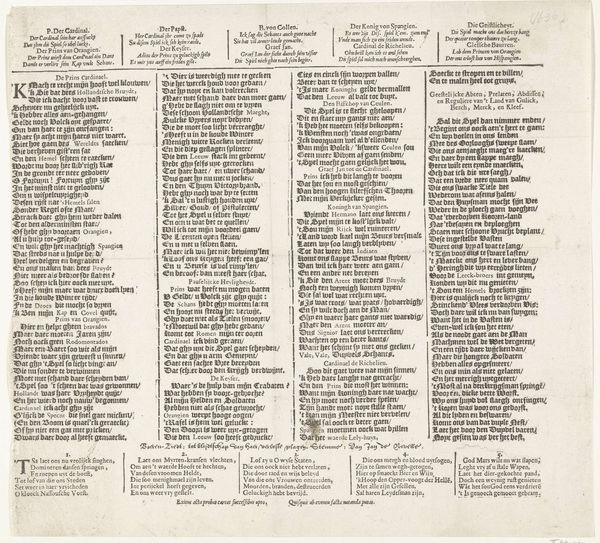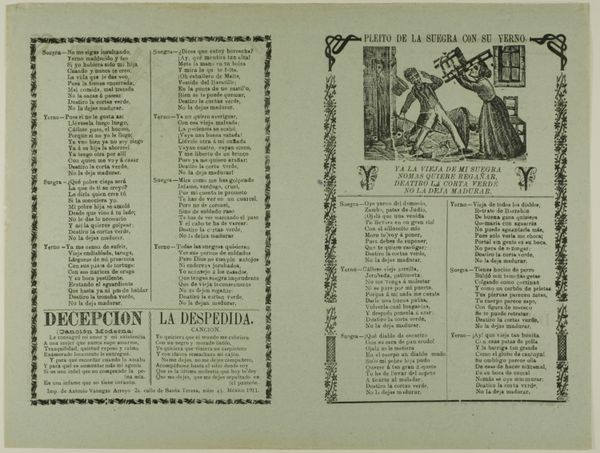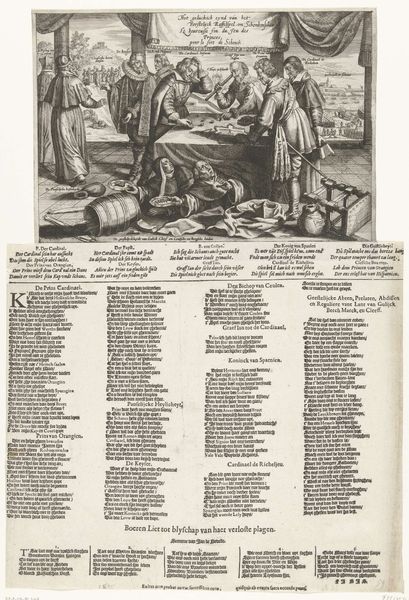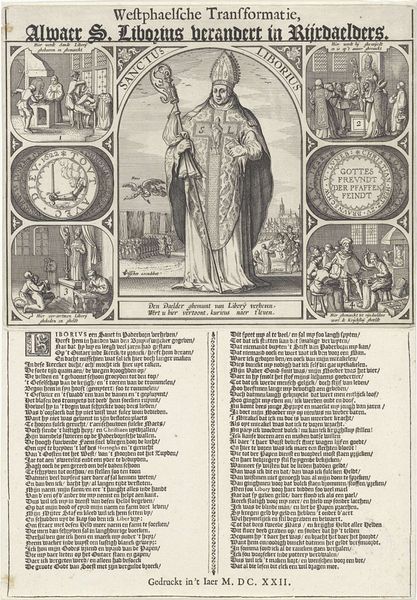
print, engraving
#
informal type
#
allegory
#
baroque
# print
#
small type
#
editorial typography
#
hand drawn type
#
typographical layout
#
figuration
#
paragraph style
#
journal
#
newspaper layout
#
stylized text
#
history-painting
#
handwritten font
#
engraving
Dimensions: height 440 mm, width 323 mm, height 95 mm, width 83 mm, height 96 mm, width 87 mm, height 94 mm, width 82 mm
Copyright: Rijks Museum: Open Domain
Editor: Here we have a print entitled "Drie theologische deugden geloof, hoop, liefde," made sometime between 1606 and 1700, attributed to Dirk van Hoogstraten. Looking at it, I'm struck by how much text there is. It’s almost overwhelming the imagery. What can you tell me about how it’s put together? Curator: The material choices and the process of creating this print are incredibly significant. We’re looking at an engraving, a process involving meticulous labor to carve lines into a metal plate. This act of repetitive work reflects a deep commitment, mirroring the religious themes it portrays. The overwhelming amount of text emphasizes that religion saturates everyday existence. What relationship did ordinary people in the 17th Century have with the "high art" like oil painting of their time, versus this more readily accessible printed work? Editor: That’s a great question. I imagine it offered a form of accessibility, allowing more people to engage with religious allegory even if they couldn’t afford an original painting. It sounds like its form relates to the content and accessibility through dissemination of the printing medium? Curator: Exactly. The printing process, the creation of multiples, made these concepts and imagery available for wider consumption, blurring lines between religious edification and everyday commerce. It speaks to the era’s evolving relationship with labor, spirituality, and consumer culture. Can you imagine the conversations and societal impact it sparked by the circulation? Editor: I never considered that. Considering this from a Materialist point of view really changes my understanding; it’s not just about the allegory but how it was crafted, distributed, and consumed, linking faith to labor and the marketplace. Thanks, I'm really taking note on this for future analysis. Curator: And for me, reflecting on the physical object underscores the democratizing potential inherent in printmaking at this time. The intersection of production and belief.
Comments
No comments
Be the first to comment and join the conversation on the ultimate creative platform.
